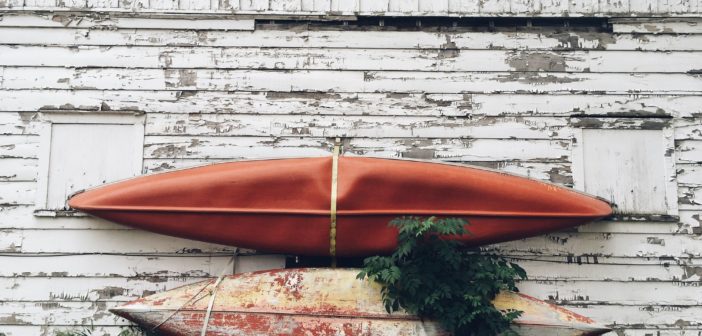Kayaking it’s an awesome way to see the world and get in touch with nature. It’s also a seriously powerful workout that helps to tone not only your arms, but also your abs, your back, and even improve your grip strength.
While we all certainly wish that it was possible to kayak all year long, unfortunately, the colder months come in and rivers and lakes freeze over. It’s time to start thinking about proper kayak storage.
After all, a kayak is an investment so you want to know how to store it the right way to protect yours.
That’s what this post is all about.
In it, we’ll fill you in on everything that you need to know about how to store a kayak during the offseason.
Clean Your Kayak Properly
If you want to understand how to store a kayak the right way, you first need to be certain that it’s completely cleaned out and ready for storage.
Before you put it away, make sure it’s in good shape. This means that you should clean it from top to bottom with diluted Castile soap and a sponge.
Check the kayak’s interior as well for any dirt, dust, or even spider webs! Make sure that you’ve totally washed off all soap residue before storage. You don’t want to risk damaging the finish or attracting bugs with any kind of a scent.
Many people also forget that completely drying your kayak is another essential part of kayak storage. After all, if you leave a kayak damp for too long, the water will interfere with the paint and surface of the kayak.
Use a towel to dry it fully, and always be certain that you have fully cleaned out the drain plug, where water loves to hide.
Finally, go ahead and get rid of the soft materials before storing a kayak for the offseason. This means that you should take out any fabrics. You might even consider taking out the kayak seat before you put it away.
Leave the fabric in a cool and dry place for the offseason.
Temperature Matters
If you really want to know the best way to store a kayak to prevent damage during the offseason, you need to take the temperature of the storage environment into consideration.
Remember that while the amount of light and humidity that you have in your storage space will often have a serious impact on the overall temperature inside of it.
Never put the kayak in an area that is likely to reach over 100 degrees. You should also avoid putting your kayak in a place that will reach freezing temperatures.
Never allow the kayak to be put in direct sunlight. The rays of the sun can quickly warp the kayak, damaging it beyond repair in many cases.
You should also make it a point to keep your kayak far away from any radiators or any other sources of heat. This can melt and warp the kayak, or lead to unsightly discoloration.
Additionally, make sure that the place where you plan to store your kayak actually has enough space for it. Overcrowded areas make it easy for the kayak to get bumped or scratched — and can also increase the temperature.
Take proper measurements before deciding where to store your kayak for the next few months. Ensure that it’s not touching any other objects, as well.
Ideal storage places include a basement, a temperature-controlled garage, or even an outdoor shed.
Above all, remember that you should do everything that you can to avoid storing it outdoors, especially for longer periods of time.
In some cases, even considering renting out a storage space for the kayak might be the best option for you.
Take Proper Coverage into Consideration
We also suggest that you invest in a specialized cover for your kayak.
While many might opt for a standard tarp, going with a fitted cover will help to keep out pests, water, and even guard against too much sunlight.
You can cover the entire kayak, or just get a smaller option that wraps around the seat.
Make sure that the cover isn’t pressing down directly onto the kayak with too much force. This will make sure that, if there’s still a little bit of moisture inside, that it won’t be able to mold and mildew.
Plus, even once the long storage season is over, you can use your cover on shorter trips, when you’re putting the kayak on top of a car, or even when you’re taking it with you on a trek.
If possible, get a cover that zips around the kayak completely.
How to Store a Kayak: Wrapping Things Up
We hope that this post has helped you to feel much more educated when it comes to learning how to store a kayak the right way.
Above all, remember that you need to look for a room with the right temperature, enough space for the kayak, and to be certain it’s been properly cleaned before storage.
When in doubt, look for a storage facility that can hang onto to your kayak until you’re ready to take it out on the water again.
Looking for additional advice about all things relating to the kayaking lifestyle?
Whether you’re on the hunt for the latest kayak reviews, need to find the right type of kayak for you, or want to improve your skills, keep reading our posts to find out everything you need to know.




